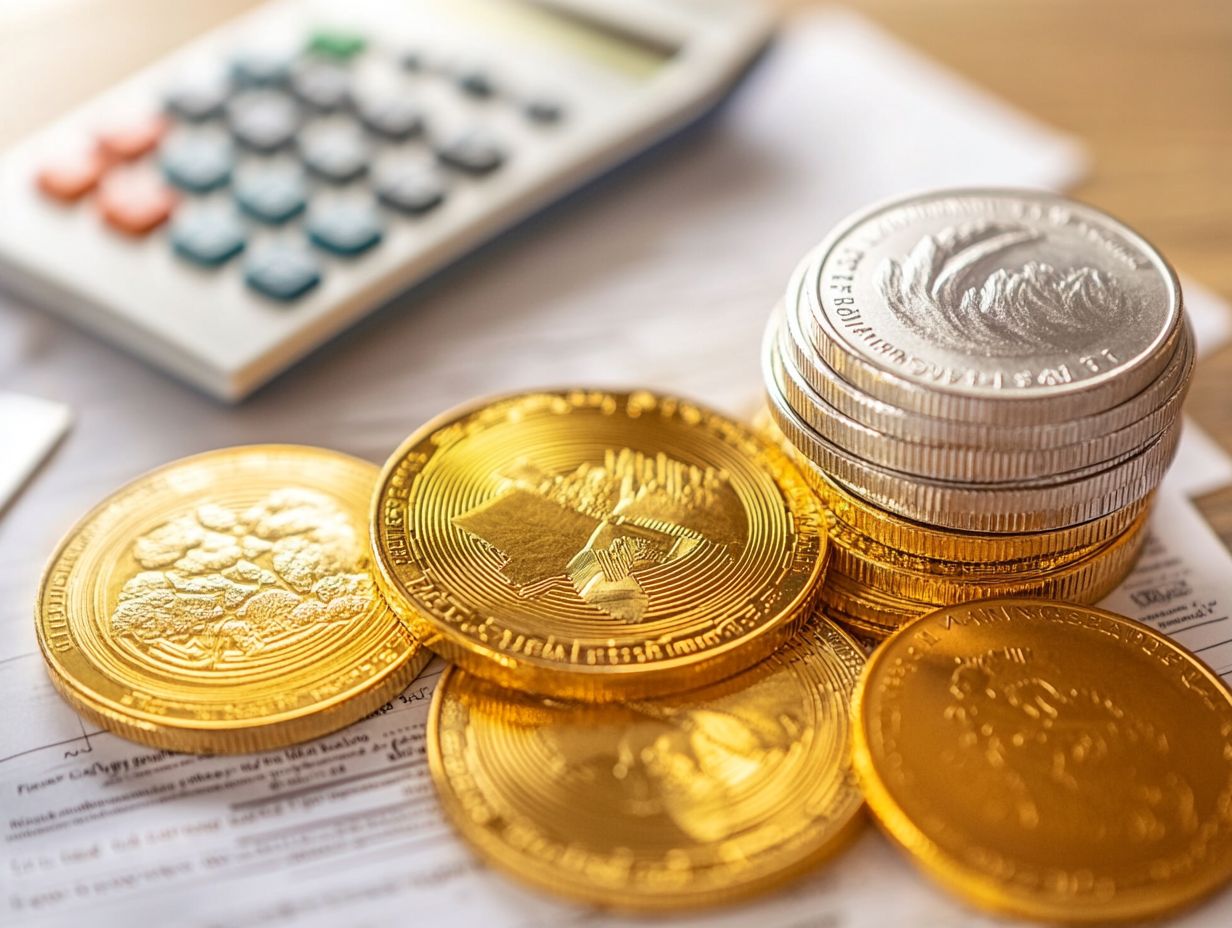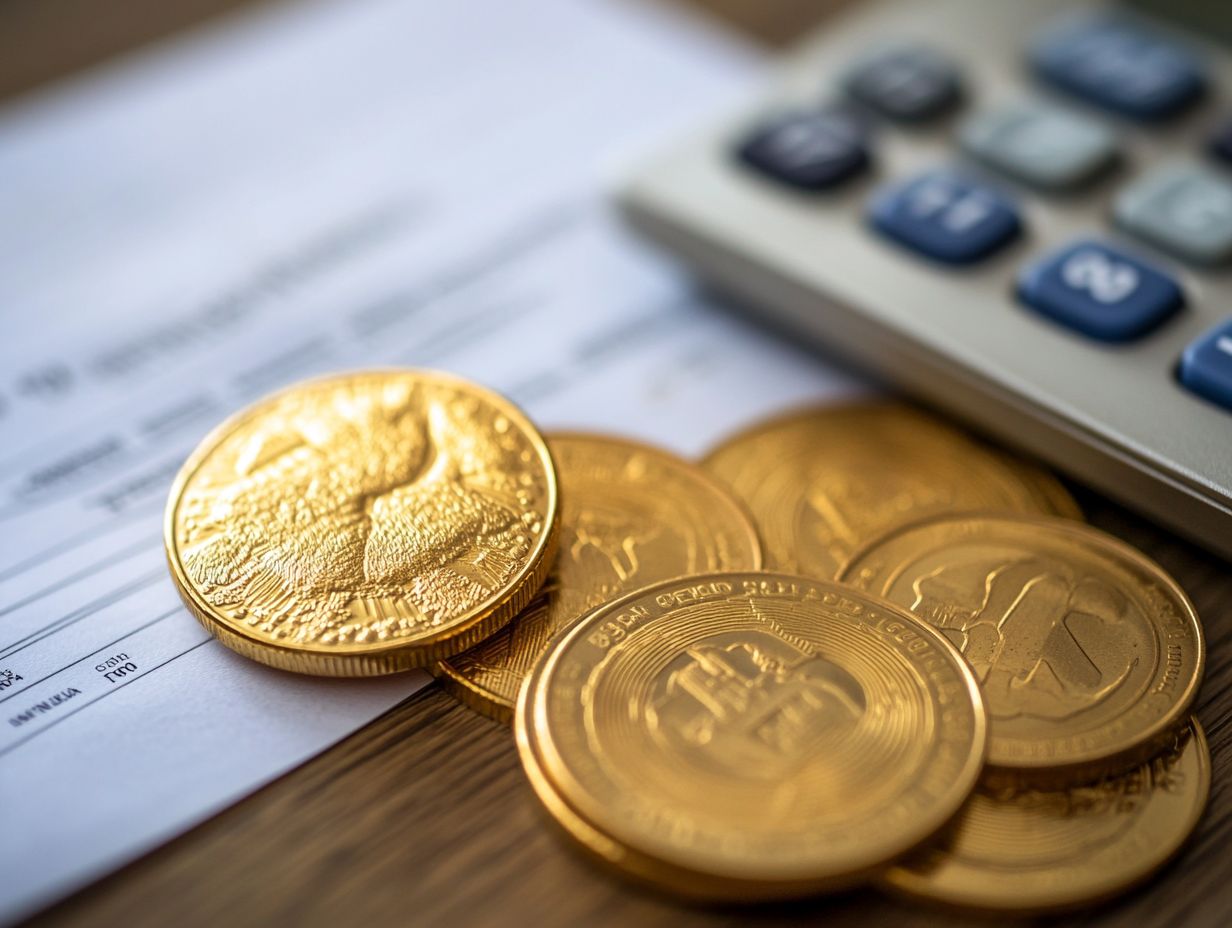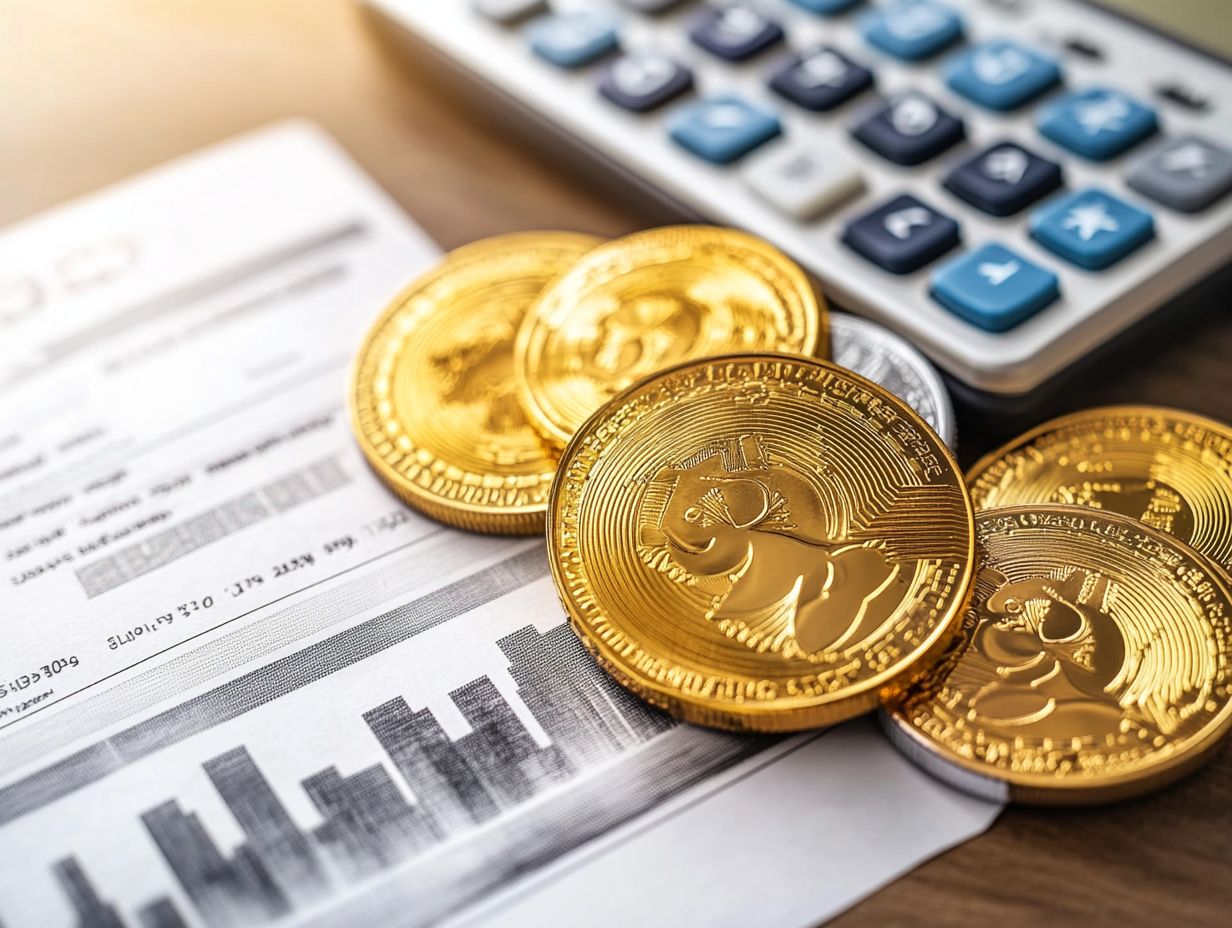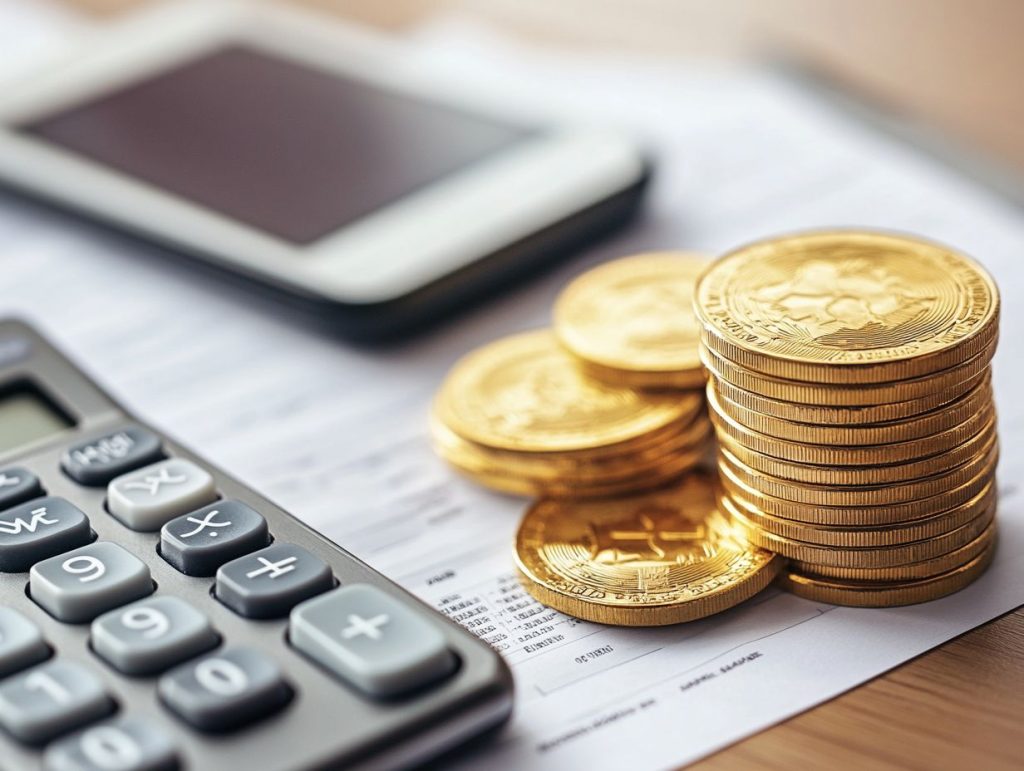Investing in a Gold IRA and silver can be an effective strategy for diversifying your retirement portfolio. A Gold and Silver IRA offers a unique opportunity to incorporate these precious metals into your retirement savings, providing potential protection against market volatility and economic downturns.
In this article, discover what a Gold and Silver IRA is, the benefits of adding these assets, and a step-by-step guide to making the transition. Whether you’re a seasoned investor or just starting, find insights to enhance your investment strategy and retirement plan.
Key Takeaways:
How To Add Gold And Silver To IRA
Incorporating gold and silver into an Individual Retirement Account (IRA) represents an effective investment strategy that leverages a self-directed IRA to enhance one’s retirement portfolio with precious metals. This method not only facilitates diversification of investments but also serves as a safeguard against market volatility, investment volatility, and economic downturns, ensuring that retirement funds align with long-term financial objectives and priorities.
By integrating gold investments—such as gold bullion, American Eagle coins, gold-focused mutual funds, gold ETFs, and gold securities—individuals can substantially improve the security and potential growth of their retirement accounts while remaining compliant with IRS regulations.
What Is a Gold and Silver IRA?
A Gold and Silver IRA is a specialized individual retirement account that enables investors to hold physical precious metals, such as gold and silver, as part of their retirement savings strategy. Unlike traditional IRAs, which primarily include stocks, bonds, or mutual funds, a precious metal IRA offers a distinct opportunity to diversify investments and safeguard wealth against inflation and market volatility, while adhering to stringent IRS standards for precious metals investments. This type of account can also include other IRA options like gold securities and gold ETFs.
This type of account not only differs in asset composition but also in the specific IRS regulations governing permissible metals, which typically encompass particular types of bullion and coins that meet established purity standards. These include recognized products like gold American Eagle, Canadian Maple Leaf, and Australian Koala. Investors frequently benefit from the expertise of financial advisors who are well-versed in these regulations, ensuring that all investments comply with IRS rules to mitigate the risk of penalties.
The establishment and maintenance of a Gold and Silver IRA require meticulous record-keeping and the utilization of custodial services dedicated to precious metals. This approach reinforces the account’s integrity and enhances its potential as a secure retirement asset and a safe haven during economic uncertainties.
Benefits of Adding Gold and Silver to Your IRA

Incorporating gold and silver into an Individual Retirement Account (IRA) offers a variety of advantages, making it a prudent investment option for individuals seeking to shield their retirement assets from market volatility and inflation. As precious metals, gold and silver serve as a refuge for investors during economic downturns, enabling effective diversification of their portfolios. This approach also supports wealth protection and long-term value preservation, further enhancing the stability of retirement funds.
This investment strategy not only bolsters the stability of retirement funds but also aims to mitigate investment risks and support long-term wealth preservation.
How Does a Gold and Silver IRA Work?
A Gold and Silver IRA functions as a self-directed IRA, enabling individuals to invest in physical precious metals in accordance with IRS regulations governing retirement accounts. This type of account necessitates the selection of a custodian bank, which facilitates the purchase, storage, and management of gold and silver investments, including the required depository purchase and adherence to stringent gold purity standards.
Investors have the option to choose from various forms of precious metals, including gold bullion and silver coins, ensuring that their investments remain compliant and secure within their retirement strategy. Additionally, options like gold mining companies and gold ETFs can be considered to further diversify their portfolios.
The custodian plays a crucial role, as they are responsible for ensuring compliance with IRS regulations that specify the types of metals permissible within the IRA and the required purity thresholds. Once an investor has chosen the appropriate custodian, the process generally involves funding the account, followed by the acquisition of the metals, which are subsequently stored in a secure facility, such as the Delaware Depository.
Investors must also ensure that these transactions adhere to IRS guidelines to avoid penalties, making the expertise of a knowledgeable custodian essential. This investment vehicle is designed to provide a hedge against inflation while facilitating wealth accumulation for the future. The involvement of organizations such as the American Numismatic Association (ANA) and the Industry Council for Tangible Assets (ICTA) can further enhance the security and credibility of these investments.
Steps to Add Gold and Silver to Your IRA
To incorporate gold and silver into your Individual Retirement Account (IRA), it is essential to adhere to a structured process comprising several key steps to ensure compliance and successful transactions. This includes careful planning and consultation with a financial advisor to align with your retirement goals.
- First, initiate the establishment of a self-directed IRA that permits alternative investments.
- Next, select a qualified custodian to manage your account effectively.
- Following this, engage with a reputable precious metals dealer to facilitate the acquisition of your chosen gold and silver investments.
- Finally, complete the transaction by ensuring full compliance with IRS regulations and custodial requirements.
1. Open a Self-Directed IRA

Establishing a self-directed IRA is a significant initial step in incorporating gold and silver into one’s retirement strategy, as it offers the flexibility to invest in alternative assets such as precious metals. Unlike traditional retirement accounts that impose restrictions on investment options, a self-directed IRA enables account holders to exercise direct control over their investments, including gold and silver, thereby enhancing portfolio diversification. This type of account can also include other alternative investments such as real estate and cryptocurrencies, providing a broader range of investment choices.
This approach facilitates access to a wider array of investment choices, encompassing real estate and cryptocurrencies, which are generally prohibited in conventional IRAs.
To establish a self-directed IRA, individuals are required to complete specific documentation and adhere to certain prerequisites, including ensuring compliance with IRS regulations. Consulting with a financial advisor can provide valuable insights into optimizing your account setup and investment choices.
It is crucial to recognize that contribution limits are consistent with those of traditional IRAs, typically permitting contributions of $6,000 annually, or $7,000 for individuals aged 50 and above. These limits ensure that your retirement plan remains compliant with IRS regulations while maximizing your potential savings.
This flexibility not only promotes more effective investment strategies but also enables individuals to align their portfolios with their financial objectives.
2. Select a Custodian
Selecting an appropriate custodian bank is crucial when incorporating gold and silver into your IRA, as they are responsible for managing your account and ensuring adherence to IRS standards. A qualified custodian will facilitate the purchase and secure storage of your precious metals investments, offering services that align with your retirement objectives and investment strategy. Reputable custodians such as STRATA Trust Company and Market Street Wealth Management Advisors can help ensure the integrity and success of your investments.
When choosing a custodian, it is imperative to assess several factors that can significantly impact your investment experience. Fees associated with their services can vary considerably; therefore, conducting a comparison of these costs can result in substantial savings over time. The custodian’s reputation deserves careful consideration; partnering with a reliable institution that has a solid track record provides reassurance to investors.
It is advisable to select a custodian that offers a comprehensive range of services specifically tailored to precious metals accounts while also demonstrating full compliance with IRS regulations. This approach ensures that your investments are both protected and managed effectively as you work toward achieving your financial goals and retirement management objectives.
3. Choose a Precious Metals Dealer
Selecting a reputable precious metals dealer is a critical step in the process of incorporating gold and silver into an Individual Retirement Account (IRA). Such dealers provide access to the physical metals desired for investment, including gold bullion and silver coins. A reliable dealer will offer a range of investment options and ensure that all purchases comply with IRS regulations pertaining to retirement accounts. Dealers certified by organizations like the Professional Numismatists Guild (PNG) and the Internal Revenue Service (IRS) can offer additional assurance of quality and compliance.
To effectively assess potential dealers, one should begin by researching their pricing structures to confirm that the costs of gold and silver are competitive. Comparing quotes from multiple sources can disclose discrepancies that may impact long-term returns. It is also important to consider the variety of products offered; a wide selection, including different coins and bars, suggests a well-established dealer. For example, dealers offering products like PAMP Suisse and Canadian Maple Leaf coins can indicate a reputable and diverse inventory.
Additionally, customer service plays a crucial role, as effective communication and support during the purchasing process can greatly enhance the overall experience. It is imperative to select verified dealers who adhere to rigorous regulatory standards and maintain transparency regarding fees and transaction processes, as this fosters trust and security throughout the investment journey. Expert recommendations from sources like USA TODAY can also guide you in selecting reputable dealers.
4. Complete the Transaction

Completing the transaction to add gold and silver to an Individual Retirement Account (IRA) or a self-directed IRA involves finalizing the purchase with the selected precious metals dealer and ensuring that the metals are properly transferred to a qualified depository. This step is critical for compliance with Internal Revenue Service (IRS) standards, as the physical gold, silver, platinum, and palladium must be securely stored within the IRA structure to maintain the tax-advantaged status of the retirement account.
The process begins with the selection of a reputable dealer capable of facilitating the acquisition of the desired metals, such as gold bullion, silver, and even American Eagle coins, which typically involves choosing accepted forms of bullion. After this selection, it is imperative to make the payment through approved methods such as wire transfer or custodian checks to secure the transaction. Working with a custodian bank can simplify this process.
Once the purchase has been confirmed, the dealer will arrange for the shipment of the metals to an approved depository, such as Delaware Depository, where they will be stored securely in accordance with IRS regulations. It is essential to obtain and retain all documentation related to the purchase and transfer, as this not only assists in verifying ownership but also ensures compliance with the specific regulations governing how such assets are managed and reported within retirement accounts, including precious metal IRAs.
Special Considerations for Precious Metals IRA
When considering a Precious Metals IRA, it is essential to acknowledge specific factors that may influence your investment strategy, retirement plan, and retirement accounts. These factors include IRS regulations governing the types of metals eligible for tax-advantaged treatment, as well as the potential investment risks associated with fluctuations in gold and silver prices, market volatility, and overall investment risks.
A comprehensive understanding of gold purity is imperative, as metals must adhere to specific quality standards to qualify for inclusion in an IRA. Additionally, considering gold-focused mutual funds and ETFs can be beneficial to diversify investments. Investors should remain vigilant regarding the risk of fraud, given the presence of unscrupulous dealers in the marketplace. Organizations like the American Numismatic Association (ANA) and the Professional Numismatists Guild (PNG) can offer guidance.
Protecting assets requires collaboration with reputable dealers, custodians, and entities like STRATA Trust Company to ensure compliance with IRS regulations, which can be intricate and subject to change. Additionally, economic factors such as inflation, economic downturn, or geopolitical instability can significantly affect the value of precious metals, making it crucial for investors to remain informed and adjust their strategies as necessary.
How to Make Withdrawals from a Gold and Silver IRA
Making withdrawals from a Gold and Silver IRA or a gold-focused mutual fund necessitates thorough planning and strict adherence to IRS regulations governing retirement accounts to ensure compliance and avoid penalties. Account holders generally have the option to liquidate their precious metals, sell their holdings, or request distributions in physical gold and silver, depending on their retirement objectives and financial requirements.
To commence the withdrawal process, individuals must first contact their custodian, who is instrumental in guiding them through the complex procedures involved. The custodian provides assistance in outlining the timing of withdrawals, noting that any distributions made prior to reaching the age of 59½ may result in a 10% early withdrawal penalty, in addition to applicable taxes. Working with a financial advisor can help mitigate these risks.
When determining how to liquidate or distribute the metals, account holders can opt to sell their holdings on the open market or transfer physical assets directly to themselves. It is essential for investors to carefully evaluate these tax implications and develop a strategy for their retirement income to ensure they achieve their financial objectives without incurring unexpected burdens. Consulting a financial advisor can provide valuable insights.
Is Adding Gold and Silver to Your IRA Right for You?
Determining whether the inclusion of gold and silver in an Individual Retirement Account (IRA) or alternative investments like gold securities and mutual funds is appropriate depends on an individual’s financial circumstances and retirement objectives. Engaging with a financial advisor, like those from Market Street Wealth Management Advisors or Empowers Retirement Planner, can yield valuable insights regarding the integration of precious metals into an overall investment strategy and portfolio allocation, ensuring alignment with long-term financial goals.
Several factors are integral to this decision-making process, including understanding your retirement savings and contribution limits. One primary consideration is risk tolerance; individuals with a higher risk appetite may perceive gold and silver as a safeguard against investment volatility and market volatility, whereas more conservative investors may exercise caution.
Additionally, assessing diversification needs is essential, as the incorporation of these metals, including gold mining companies and ETFs, can improve portfolio stability by reducing exposure to traditional asset classes. Current market conditions, gold prices, and trends within the precious metals sector can influence their potential advantages, underscoring the importance of remaining well-informed.
Ultimately, seeking professional guidance can facilitate the navigation of these complexities and assist in determining the appropriate role of precious metals within a retirement account. Resources like USA TODAY and the Industry Council for Tangible Assets (ICTA) can offer valuable information.

